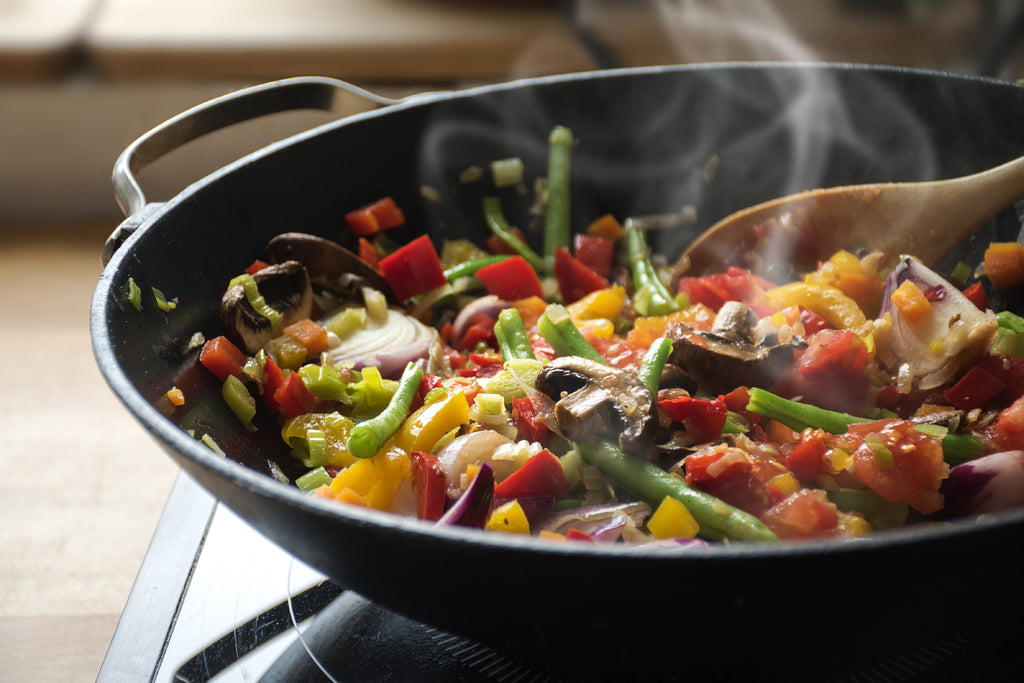Why a Cast Iron Wok is a Better Alternative: Pros and Cons Compared with Other Materials

Woks have been a staple of Asian cooking for centuries, and for good reason. They are a versatile and efficient tool that can handle a wide range of cooking tasks, from stir-frying and sautéing to steaming and deep-frying. When it comes to choosing a wok, there are many options available, but one material that stands out is cast iron.
Cast iron woks are increasingly popular due to their durability, versatility, and superior heat retention. In this blog post, we'll explore why a cast iron wok is a better alternative than other materials, including the pros and cons compared with other materials.

What is a Cast Iron Wok?
A cast iron wok is a deep, round pan made of cast iron, which is a type of iron alloy that is known for its durability and heat retention. Cast iron woks have a flat bottom and sloping sides that make it easier to stir and toss ingredients. They are typically seasoned with oil or grease to create a non-stick surface and prevent rust.
Benefits of a Cast Iron Wok
-
Heat Retention: One of the biggest benefits of a cast iron wok is its ability to retain heat. Cast iron is a dense material that can hold onto heat for a long time, even after the heat source has been removed. This means that you can cook food evenly and quickly without worrying about hot spots.
-
Versatility: Cast iron woks are versatile and can be used for a variety of cooking methods, including stir-frying, sautéing, braising, and even deep-frying. They can also be used on different heat sources, including gas, electric, and induction cooktops, as well as on grills and in ovens.
-
Durability: Cast iron woks are incredibly durable and can last for generations with proper care. They are resistant to scratches and dents and can withstand high temperatures without warping.
-
Non-Stick Surface: When properly seasoned, a cast iron wok can have a natural non-stick surface that makes it easier to cook with and clean. This can be a great alternative to non-stick coatings that can chip or scratch over time.
-
Iron Enriched Food: Cooking in a cast iron wok can add a small amount of dietary iron to your food. This can be especially beneficial for people with iron deficiencies.

Cons of a Cast Iron Wok
-
Heavy: Cast iron woks can be heavy, especially when compared to other materials like carbon steel or aluminum. This can make them more difficult to handle and maneuver, especially when filled with food.
-
Slow to Heat Up: Cast iron woks can take longer to heat up than other materials, which can be frustrating if you're in a hurry. However, once they are heated, they retain that heat for a long time.
-
Requires Seasoning: Cast iron woks need to be seasoned regularly to maintain their non-stick surface and prevent rust. This can be an extra step that some cooks might find inconvenient.
Alternative Wok Materials
While cast iron is a popular choice for woks, there are other materials to consider as well. Here are a few common alternatives and their pros and cons:
-
Carbon Steel Woks: Carbon steel woks are lighter and easier to handle than cast iron woks. They also heat up faster, making them a great choice for cooks who want to get dinner on the table quickly. However, they don't retain heat as well as cast iron woks and may require more frequent seasoning.
-
Non-Stick Woks: Non-stick woks are convenient and easy to clean, but they can be prone to scratching and chipping over time. They also can't be used at high temperatures, which limits their versatility in the kitchen.
-
Aluminum Woks: Aluminum woks are lightweight and affordable, but they can be prone to warping and can't be used with certain heat sources, like induction cooktop.

A wok made of cast iron is a versatile and durable cooking vessel that offers benefits such as heat retention, versatility, durability, a non-stick surface, and iron-enriched food. However, cast iron woks can be heavy, slow to heat up, and require seasoning. Carbon steel woks are a lighter and easier to handle alternative, while non-stick woks are convenient but can't be used at high temperatures. Aluminum woks are lightweight and affordable but can warp and can't be used with certain heat sources. Ultimately, the choice of wok material depends on personal preference and cooking needs.
Related content: When to cook with a wok
















I have 2 cast iron woks of different sizes, such as 13 and 14, and they are light weight that are made in China. I love using them very much for my Asian stir frying foods. I bought them from the Wok Shop of San Francisco, CA. They are wonderful.
Leave a comment